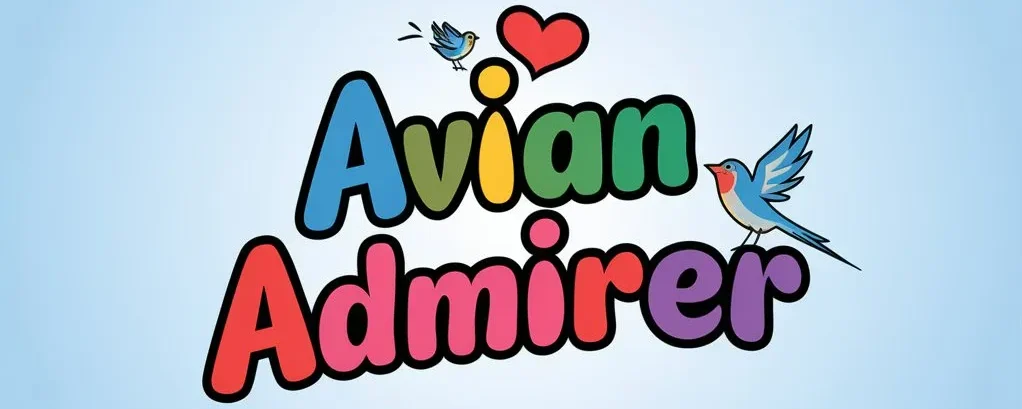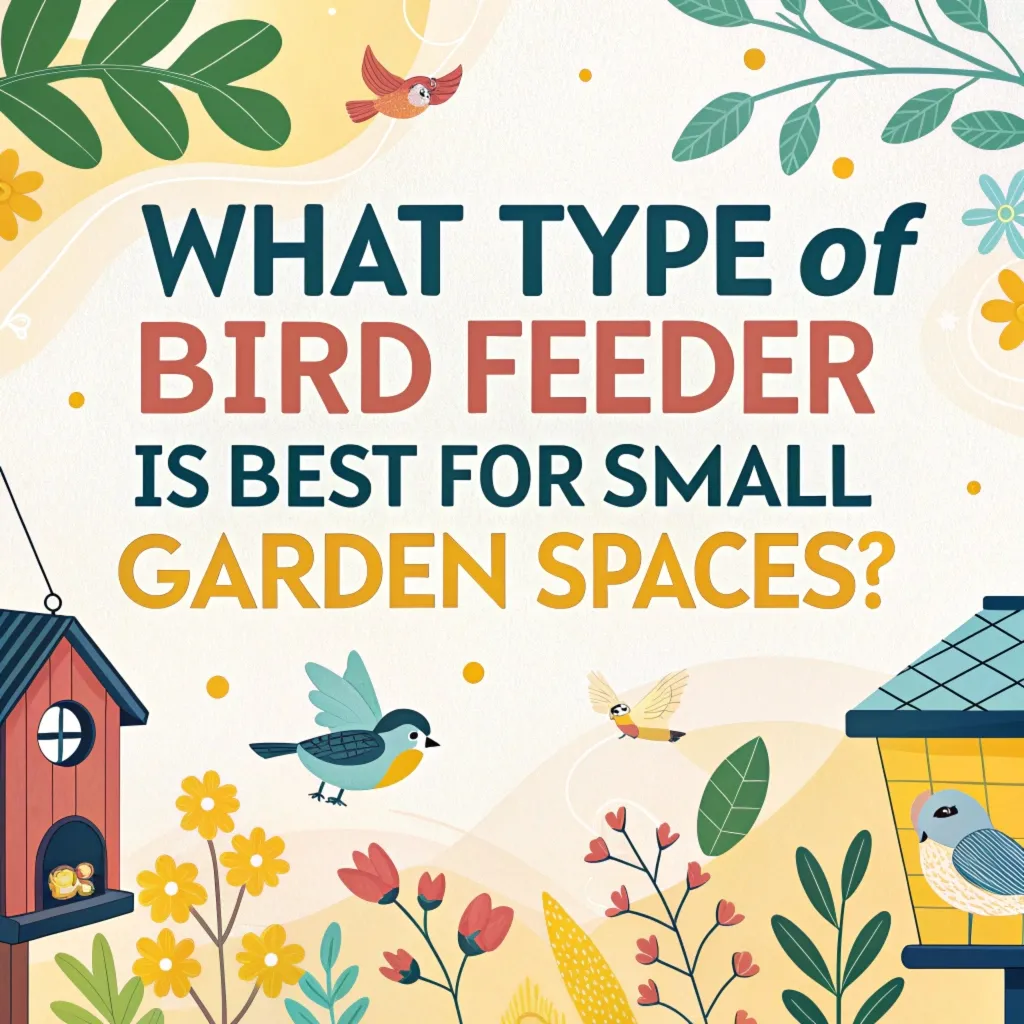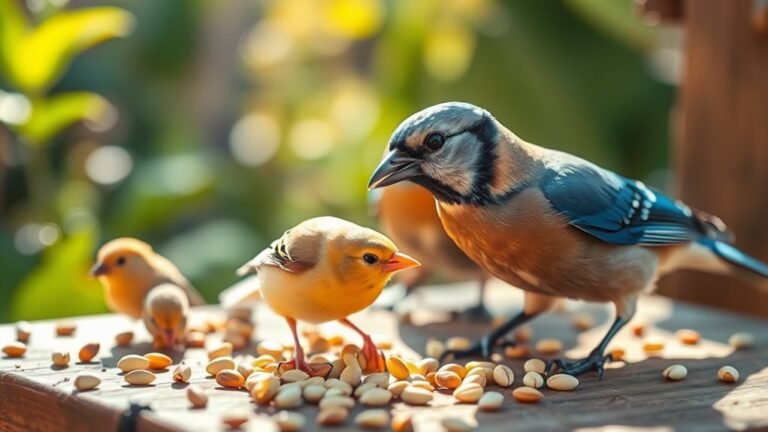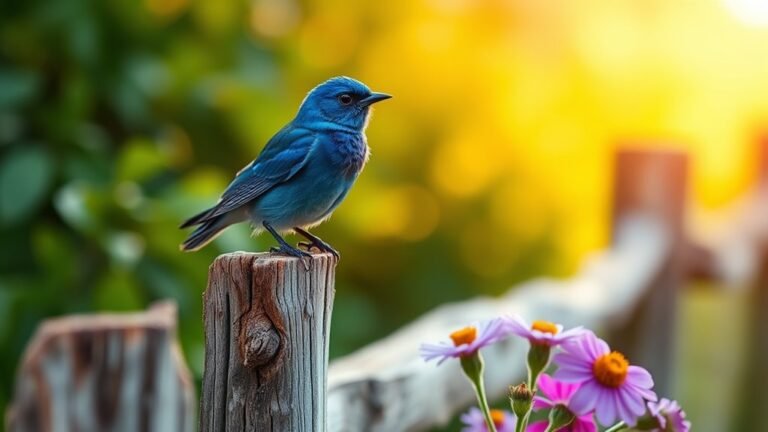What Type of Bird Feeder is Best for Small Garden Spaces?
Bird feeders transform small gardens into vibrant wildlife havens. This guide helps you choose the best feeders for compact spaces. You will learn about different feeder types, their benefits, and how to attract a variety of birds.
We cover window feeders, tube feeders, Nyjer seed feeders, caged feeders, and compact hanging feeders. The article also provides tips on feeder placement, maintenance, and seed selection.
By following this advice, you can create a thriving bird-feeding station in your small garden. Get ready to enjoy close-up views of colorful feathered visitors right outside your window.
Key Takeaways
- Window feeders offer close-up views and work well in tight spaces
- Tube feeders hang easily and accommodate various seed types
- Nyjer seed feeders attract small birds like finches
- Caged feeders protect food from larger birds and squirrels
- Compact hanging feeders save space while providing food for birds
- Clean feeders regularly to prevent disease spread
- Choose the right seeds to attract desired bird species
- Place feeders strategically for bird safety and viewing enjoyment
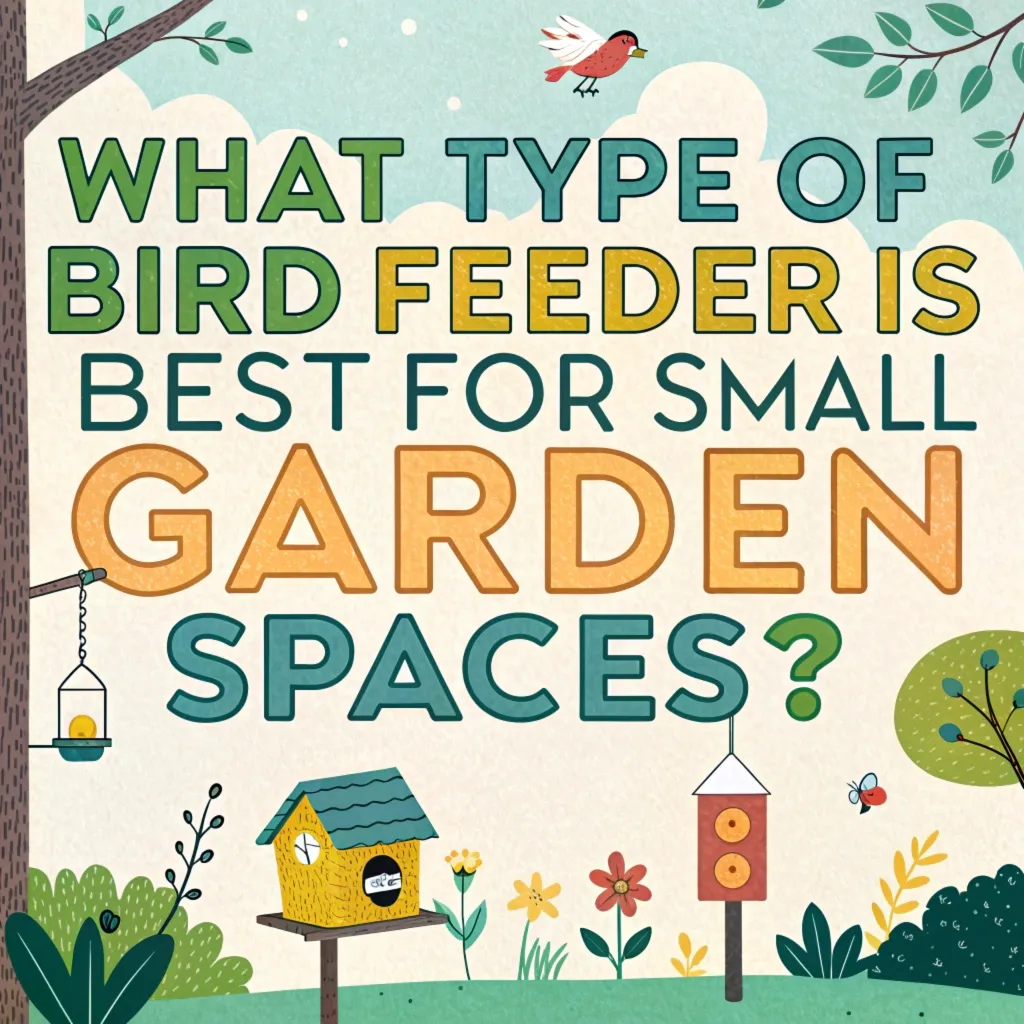
Window Feeders: Perfect for Up-Close Bird Watching
Window feeders attach directly to glass using suction cups. These feeders offer unparalleled views of birds. They work well in apartments, condos, and homes with limited outdoor space.
Benefits of window feeders:
- Provide close-up views of feeding birds
- Take up no ground space
- Easy to install and refill
- Protect birds from predators
When selecting a window feeder, choose a sturdy model with strong suction cups. Clear acrylic designs allow for optimal visibility.
Creating a welcoming environment for birds near your windows enhances your connection with nature.
Consider adding decorative elements like colorful flowers or small ornaments near the feeder to make it more attractive to birds.
Remember to keep curtains or blinds partially closed to reduce the risk of bird collisions while still allowing you to enjoy the view.
Tube Feeders: Versatile Options for Small Gardens
Tube feeders consist of a cylindrical container with feeding ports and perches. These feeders work well in small gardens, patios, and balconies.
Advantages of tube feeders:
- Hold a good amount of seed
- Attract a variety of bird species
- Can be hung from trees, hooks, or poles
- Available in different sizes
Look for tube feeders with metal feeding ports to deter squirrels. Some models feature adjustable perches to control the size of birds that can access the food.
Tube feeders are excellent for creating a diverse bird habitat in small spaces. By offering different types of seeds in multiple tube feeders, you can attract a wide range of species.
Consider placing tube feeders at varying heights to accommodate birds with different feeding preferences. This arrangement can transform even the smallest garden into a bustling bird sanctuary.

Nyjer Seed Feeders: Attract Finches to Your Small Space
Nyjer seed feeders cater specifically to small birds like finches. These specialized feeders have tiny ports that dispense the small Nyjer seeds.
Why choose Nyjer seed feeders:
- Attract colorful finches and other small birds
- Discourage larger birds and squirrels
- Require less space than traditional feeders
- Often feature multiple feeding ports
Hang Nyjer seed feeders near shrubs or trees to provide cover for small birds. Keep the feeder filled with fresh Nyjer seeds to maintain bird interest.
Nyjer seeds are a favorite among finches and other small birds, making these feeders a must-have for bird enthusiasts with limited space.
The tiny size of Nyjer seeds means less mess and spillage, which is ideal for keeping small garden areas tidy.
Consider pairing a Nyjer seed feeder with a water source nearby to create a complete feeding station for these delightful birds.
Caged Feeders: Protect Food from Larger Birds and Squirrels
Caged feeders surround a central feeding area with a wire cage. This design allows small birds to access food while keeping larger birds and squirrels out.
Benefits of caged feeders:
- Ensure food availability for small birds
- Deter squirrels and large birds
- Reduce seed waste
- Work well in areas with diverse bird populations
Choose a caged feeder with appropriate spacing between bars to allow target bird species access. Some models feature weight-activated perches for added squirrel protection.
Caged feeders offer a practical solution for small gardens where squirrels or larger birds might dominate traditional feeders.
By providing a safe feeding space for smaller birds, these feeders help maintain biodiversity in your garden.
Consider placing caged feeders near dense foliage or shrubs to give small birds quick access to cover, enhancing their sense of security while feeding.
Compact Hanging Feeders: Space-Saving Solutions
Compact hanging feeders come in various designs, including small hoppers and dishes. These feeders hang easily from hooks or branches, making them ideal for small gardens.
Advantages of compact hanging feeders:
- Take up minimal space
- Easy to hang and refill
- Available in decorative designs
- Attract a variety of bird species
Look for compact feeders with built-in drainage to prevent seed spoilage. Some models feature clear sides, allowing you to monitor seed levels easily.
Compact hanging feeders are perfect for creating a vertical garden of bird feeding stations. By utilizing vertical space, you can maximize the number of feeders in a small area without cluttering the ground.
Consider using decorative hooks or shepherd’s poles to hang these feeders, adding both functionality and aesthetic appeal to your small garden space.
Maintaining Your Small Garden Bird Feeder
Regular maintenance ensures a healthy feeding environment for birds in your small garden.
Tips for feeder maintenance:
- Clean feeders every two weeks with a mild bleach solution
- Allow feeders to dry completely before refilling
- Remove old, wet, or moldy seed promptly
- Keep the area under feeders clean to prevent disease spread
Proper maintenance is crucial for the health and safety of visiting birds. Establish a regular cleaning schedule to prevent the spread of diseases among bird populations.
Consider keeping a maintenance log to track cleaning dates and seed refills, ensuring consistent care for your feathered visitors.
This practice not only benefits the birds but also helps you stay organized in managing your small garden feeders.

Choosing the Right Seeds for Your Small Space Feeder
Selecting appropriate seeds attracts desired bird species and reduces waste.
Popular seed options for small garden feeders:
- Black oil sunflower seeds: Attract a wide variety of birds
- Nyjer seeds: Ideal for finches and small birds
- Safflower seeds: Attract cardinals and deter squirrels
- No-mess seed blends: Reduce ground cleanup in small spaces
Consider offering a variety of seeds to attract diverse bird species to your small garden.
The right seed selection can significantly impact the diversity of birds visiting your small garden. Experiment with different seed mixes to discover which attract the most birds in your area.
Keep in mind that some seeds, like millet, can be messy and may lead to unwanted ground feeding. Opt for high-quality seeds to minimize waste and ensure that your limited space remains attractive to both birds and humans.
Optimal Feeder Placement in Small Gardens
Strategic feeder placement ensures bird safety and enhances viewing opportunities.
Tips for feeder placement:
- Position feeders near natural shelter like shrubs or trees
- Keep feeders at least 10 feet away from reflective surfaces to prevent window collisions
- Place feeders at varying heights to attract different bird species
- Ensure feeders are visible from indoor viewing areas
Thoughtful placement of feeders in a small garden can create a safe and inviting environment for birds. Consider the natural landscape of your space and use it to your advantage.
Placing feeders near existing vegetation provides birds with quick escape routes from predators. In very small spaces, use window decals or external screens to minimize collision risks if feeders must be placed closer to windows.
Attracting Specific Bird Species to Small Gardens
Different bird species prefer certain feeder types and foods.
Feeder preferences for common garden birds:
- Chickadees and titmice: Tube feeders with sunflower seeds
- Finches: Nyjer seed feeders or tube feeders with finch mix
- Woodpeckers: Suet feeders or peanut feeders
- Hummingbirds: Nectar feeders (in suitable climates)
Research local bird populations to determine which species you’re likely to attract in your area.
Tailoring your feeding strategy to attract specific bird species can turn your small garden into a birdwatcher’s paradise. Research the native birds in your region and their feeding habits.
Consider creating micro-habitats within your small space by offering a variety of food types and feeder styles. This approach can attract a surprising diversity of birds, even in limited areas.
Seasonal Considerations for Small Garden Bird Feeding
Adjust your feeding strategy throughout the year to support birds‘ changing needs.
Seasonal feeding tips:
- Offer high-energy foods like suet in winter
- Provide fresh water sources year-round
- Increase food offerings during migration periods
- Clean feeders more frequently in warm, humid weather
Adapting your feeding approach to match the changing seasons is crucial for supporting bird populations year-round. In small gardens, consider using multi-functional feeders that can accommodate different types of food throughout the year.
During migration seasons, temporary platform feeders can be added to provide extra feeding space for traveling birds without permanently taking up limited garden area.
Combining Feeders in Small Spaces
Create a diverse feeding station by combining different feeder types.
Ideas for multi-feeder setups:
- Hang a tube feeder and Nyjer feeder from the same hook
- Place a window feeder near a hanging suet cage
- Use a pole system with multiple arms for various feeder types
Experiment with different combinations to find what works best in your small garden space.
Creative arrangement of multiple feeders can transform a small space into a thriving bird hub. Consider using vertical space by installing a sturdy pole or shepherd’s hook that can support several feeders at different heights.
This approach maximizes feeding opportunities without cluttering ground space. Remember to maintain adequate spacing between feeders to prevent competition and allow birds of different species to feed comfortably.
Frequently Asked Questions
How long does it take for birds to find a new feeder?
Birds may discover a new feeder within days or weeks. Patience is key. Ensure the feeder is visible and filled with fresh seed.
Can I feed birds if I only have a balcony?
Yes. Window feeders, rail-mounted feeders, and hanging feeders work well on balconies. Choose models designed for small spaces.
How do I prevent squirrels from accessing my small garden feeder?
Use squirrel-proof feeders, caged feeders, or add baffles to hanging feeders. Position feeders away from surfaces squirrels can jump from.
What’s the best all-around seed for small garden feeders?
Black oil sunflower seeds attract a wide variety of birds and work well in most feeder types.
How often should I clean my bird feeder?
Clean feeders every two weeks, or more frequently in wet weather. Regular cleaning prevents disease spread among birds.

Ava is a bird enthusiast and nature lover who has spent countless hours observing and learning about the fascinating world of birds. With a passion for sharing her knowledge and inspiring others to appreciate the beauty of birds, Ava writes about her experiences and insights on avianadmirer.com.
